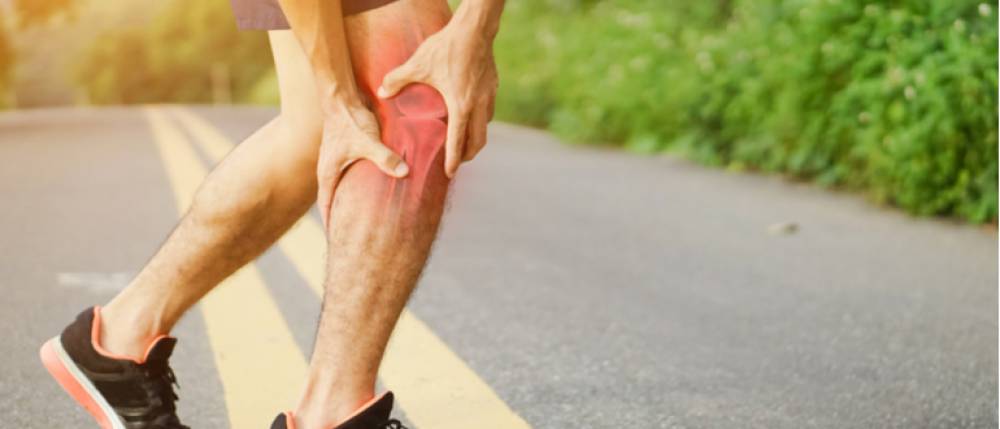Subscribe to get weekly insights
Always stay up to date with our newest articles sent direct to your inbox
Published on 29 Sep, 2020
Updated on 6 Feb, 2024
1264 Views
2 min Read

Written by Care Health Insurance
favorite0Like
favoriteBe the First to Like
There are over 600 muscles in the body with specific functions, and they work together to enable the proper functioning of our system. Cramps in the muscles sometimes occur at the most unexpected moments. Unknowingly, we do certain activities such as pulling, lifting objects, or even sitting at the desk for long hours – all these take a toll on the muscles causing stiffness, and cramping. The duration of cramps may vary, and it may not be easy to pinpoint the exact causes. Yet, some factors could trigger muscle cramps. They include low fitness, muscle injury, electrolyte imbalance in the body, or inflexible muscles.
Muscle cramps are an involuntary contraction of muscles that happen suddenly and do not relax. They commonly affect the muscles located in the lower leg, thighs, and back. Usually, cramps do not have any severe consequences, but they could indicate an underlying medical condition.
The best treatment for muscle cramps is by giving a sustained stretch to the affected muscles, followed by a gentle massage to provide instant relief. In severe cases, it is advisable to consult a physiotherapist. Also, one can try applying an icepack for a few minutes to relax the tense muscles. Further, a hot or cold compress also works to provide relief.
Dehydration could be one of the causes of muscle cramps. Electrolyte imbalance means a lack of vital chemicals in the body. For instance, an episode of gastroenteritis can result in electrolyte imbalance, dehydration, and weakness; thus, muscle cramps could be one of the effects. Also, the body loses water during exercising. So, keep yourself hydrated by drinking water in adequate amounts.
Vital nutrients such as potassium, sodium, magnesium, and calcium are examples of electrolytes the body needs in the right quantities. They are also available in various healthy foods. For instance, bananas are excellent sources of potassium, calcium, and magnesium. Besides, you will get sufficient nutrients for the muscles in lentils, watermelon, milk, leafy greens, nuts, and seeds.
Stretching and warm-up before exercising will help prevent muscle strain. Also, there are some things to avoid – like exercising right after meals or excessive caffeine intake. Stretching is useful, especially for those who experience frequent muscle cramps in leg. Light strengthening exercises are effective in keeping the muscles healthy and prevent cramps.
Most of us might have experienced muscle cramps at some point. Commonly, people are prone to muscle cramps in back, legs, or feet. The causes may vary; some medicines can also cause muscle cramps. One can treat them quickly if the muscle can be stretched, and prevent them through:
In case the cramps are severe and persist for extended, without any improvement after exercises, stretching, or message, it is advisable to get medical attention. It is necessary as that could be a sign of a medical condition such as sciatica. The doctor may recommend an MRI or blood test. If a person experiences loss of sensation, weakness, or severe pain, these could be symptoms of a nerve disorder.
Staying prepared for a medical emergency is a wise decision. Hence, choose a mediacal health insurance policy that will help you bear the burden of treatment costs in case of an ailment. Besides, there are benefits such as annual health check-up and no claim bonus that will keep you worry-free.
Disclaimer: The above information is for reference purposes only.
favoriteBe the First to Like
Thyroid : मामूली नहीं हैं महिलाओं में थायराइड होना, जानें इसके लक्षण और घरेलू उपचार Vipul Tiwary in Diseases
शुगर कंट्रोल कैसे करे? जानें, डायबिटीज में क्या खाना चाहिए Vipul Tiwary in Health & Wellness
हाई ब्लड प्रेशर को तुरंत कंट्रोल कैसे करें? देखें इसके उपाय Vipul Tiwary in Diseases
पैरों में दर्द किस कमी से होता है? जानें, इसके घरेलू इलाज Vipul Tiwary in Health Insurance Articles
Silent Epidemic: Fatty Liver Disease Now Targeting the Young! Jagriti Chakraborty in Health Insurance Articles
Iodine Rich Foods: The Unsung Heroes of a Healthy Thyroid and a Sharp Mind Jagriti Chakraborty in Diet & Nutrition
Honey, Jaggery & Sugar: Which Sweetener Wins? Jagriti Chakraborty in Health & Wellness
What Happens to Your Body When You Eat Capsicum Every Day? Jagriti Chakraborty in Diet & Nutrition
Always stay up to date with our newest articles sent direct to your inbox
Loading...